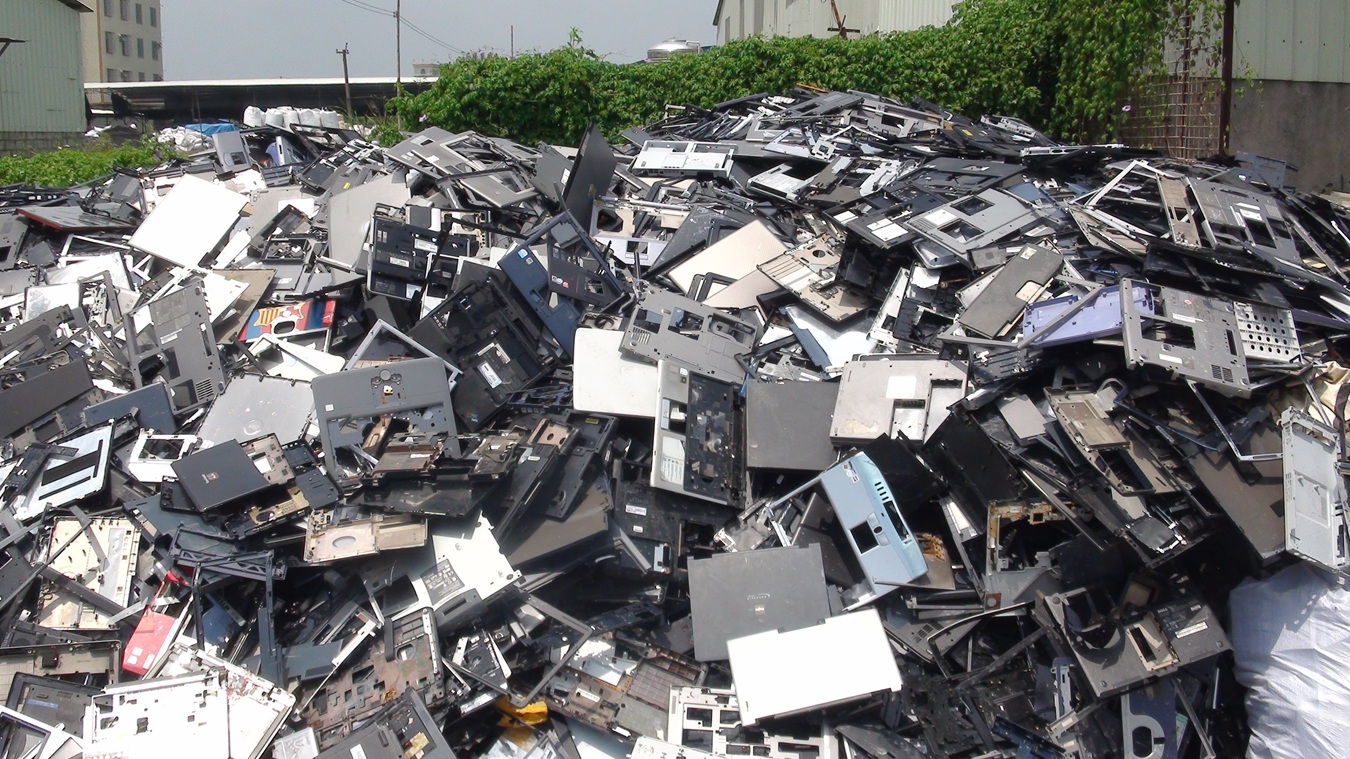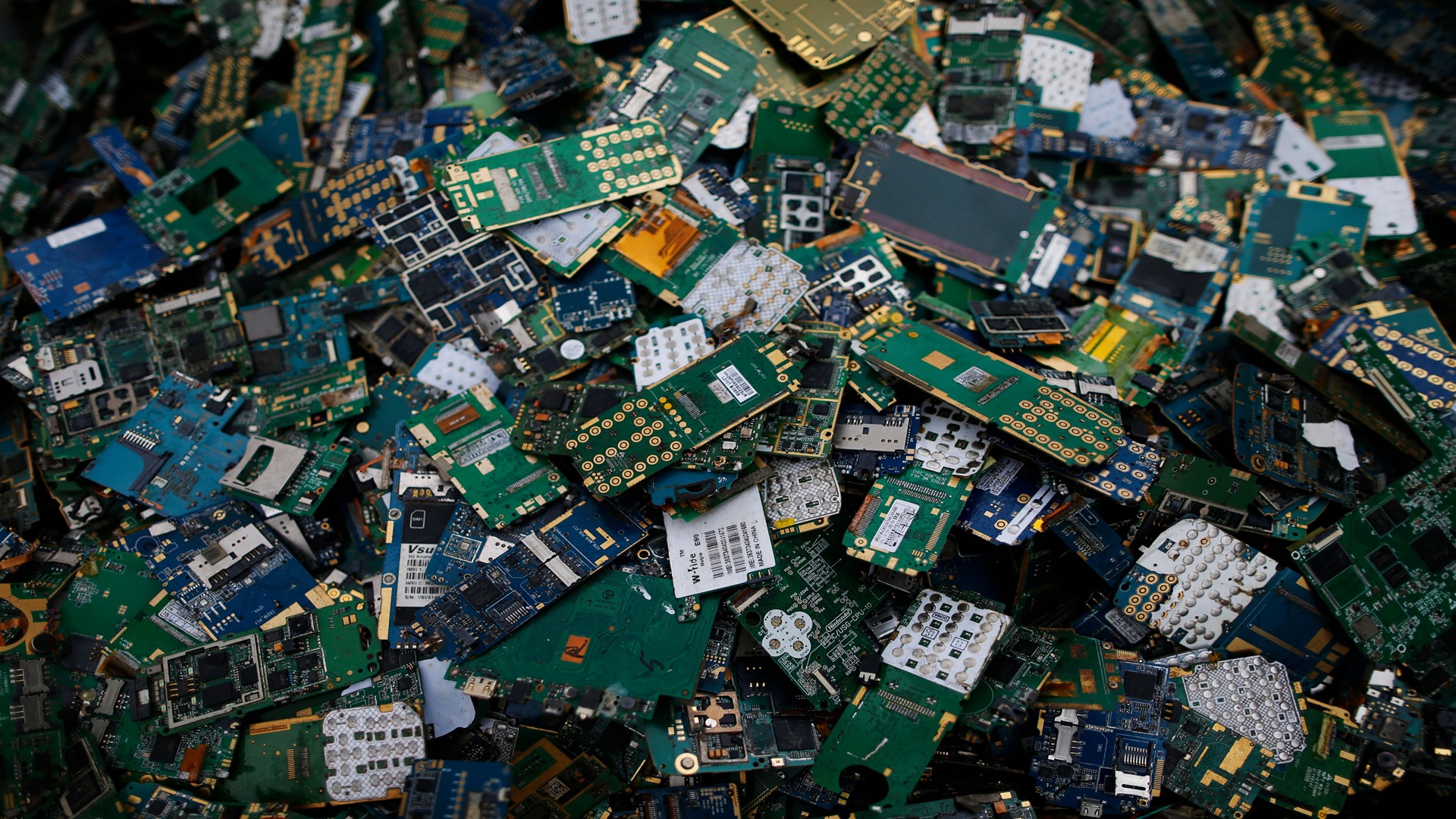The rapid pace of increased urbanization, technological advancements, and changing consumer behaviours has led to a surge in discarded electronic devices. As products reach the end of their life cycle or become outdated, they contribute to a growing volume of waste and accumulate in landfills, making e-waste one of the fastest-growing solid waste streams globally. India has emerged as the world’s third-largest generator of e-waste after China and the USA, producing 3.8 million metric tonnes (MMT) in FY24—a 100% surge over the past decade. In value terms, this is worth over $6 billion.
Effective e-waste management plays a critical role in combating environmental challenges while unlocking economic opportunities through material recovery. For e-waste recycling businesses, selecting the right e-waste shredder machine and recycling plant is pivotal to maximizing their return on investment (ROI) from extracting valuable materials, reducing operational costs, and ensuring environmentally responsible practices.
This article delves into key considerations and technical insights for choosing e-waste recycling plant solutions tailored to your specific needs while navigating India’s E-Waste (Management) Rules, 2022.
Understanding E-Waste and Its Composition
E-waste encompasses discarded electrical and electronic equipment (EEE) such as Information Technology and Telecommunication equipment, Consumer Electrical and Electronic and Photovoltaic Panels, Large and Small Electrical and Electronic equipment, Toys, Leisure and Sports equipment, Medical devices and components from manufacturing or refurbishment processes.
Proper management involves extracting economically valuable materials, such as plastics, iron, glass, aluminium, copper, precious metals (like silver, gold, platinum, palladium, and indium), and rare earth elements (like lanthanum and neodymium), while mitigating the risks posed by hazardous substances, including lead, cadmium, mercury, hexavalent chromium, brominated flame retardants and others.
Crucial Factors to Consider When Choosing an E-Waste Shredder Machine:
Regulatory Compliance and Standards Adherence:
Prior to making investments in e-waste recycling plant, it is essential to ensure full compliance with the E-Waste (Management) Rules, 2022, the framework that governs e-waste handling within India. Observing environmentally sound management practices is not only vital for the protection of both human health and the environment, but also serves to mitigate the risk of penalties and operational interruptions. Furthermore, the acquisition of equipment designed to meet Reduction of Hazardous Substances (RoHS) standards is critical to confirm that hazardous materials inherent in e-waste are handled responsibly. To facilitate seamless and legally compliant operations, producers, recyclers, and manufacturers must also fulfil the requirement to register on the E-Waste EPR Portal.
Type of E-Waste and Material Composition:
The selection of an appropriate e-waste shredder machine fundamentally depends on a comprehensive understanding of the e-waste stream’s characteristics. E-waste is a complex mixture of various materials; when we talk about printed circuit boards (PCBs) and printed wiring boards (PWBs), they exemplify this complexity, containing both valuable and hazardous materials. Therefore, shredders must be chosen based on their ability to effectively handle this heterogeneity, with considerations for material hardness, density variations, and the liberation of target materials from composite structures.
Capacity and Throughput Optimization:
In an e-waste recycling equipment, the shredder’s capacity and throughput are critical determinants of overall processing efficiency. Capacity refers to the volume of e-waste the machine can process, while throughput denotes the mass of material processed per unit of time. Matching the shredder’s capacity to the plant’s input volume is essential to prevent bottlenecks and ensure a continuous flow of material. Furthermore, the machine’s design should facilitate consistent performance under varying load conditions. Factors such as automated feed systems, real-time monitoring, and efficient material conveyance mechanisms contribute to optimizing throughput and maximizing the plant’s operational efficiency.
Shredding Technology and Particle Size Control:
Different shredding technologies offer distinct advantages depending on the desired outcome of the shredding process. Shear shredders, utilizing rotating blades, excel at cutting bulky items and reducing the risk of dust generation, which is crucial when handling hazardous materials.
Hammer mills employ high-speed rotating hammers to fracture materials, making them suitable for liberating different components within e-waste. Granulators are used for fine particle size reduction, ensuring uniformity for subsequent separation processes. The choice of shredding technology directly influences the particle size distribution of the output material, which in turn affects the efficiency of downstream separation techniques like magnetic separation, eddy current separation, and density separation.
Material Recovery Efficiency and Purity:
A primary objective of e-waste recycling facility is the recovery of valuable materials. The shredder plays a vital role in this process by breaking down e-waste into smaller fractions, facilitating the separation of different materials. High material recovery efficiency implies maximizing the yield of target materials, while high purity refers to minimizing cross-contamination between different material streams. Shredders that minimize material degradation, prevent material loss, and aid in liberation contribute to both recovery efficiency and purity. Advanced shredding systems may incorporate features like optimized cutting geometries and controlled shredding parameters to enhance the separation of materials.
Safety Protocols and Environmental Safeguards:
E-waste often contains hazardous substances that can pose risks to human health and the environment if not handled properly. Therefore, shredders must be equipped with robust safety protocols and environmental safeguards. Enclosed systems, dust suppression mechanisms, and filtration systems are essential to contain dust and prevent the release of pollutants into the atmosphere. Noise reduction engineering is necessary to protect worker safety, and emergency shutdown mechanisms are crucial to prevent accidents. Compliance with environmental regulations, such as the E-Waste (Management) Rules, 2022, is mandatory to ensure environmentally sound management of e-waste.
Durability, Maintenance, and Lifecycle Cost:
E-waste processing can be abrasive and demanding on machinery, necessitating durable and robust shredder construction. Wear-resistant materials and heavy-duty components are essential to withstand continuous operation and minimize downtime. Modular designs can facilitate maintenance and component replacement, reducing the time and cost associated with repairs. When evaluating shredders, it is crucial to consider the total lifecycle cost, including initial investment, energy consumption, maintenance expenses, and the cost of spare parts, to make an informed decision that maximizes long-term ROI.
For instance, if they aim to produce output within a 50-150 mm range, a primary shredder might suffice. However, if they require a smaller size which is 20 to 30 mm or 1 to 5 mm output with high production capacity, they’ll need to invest in additional equipment, such as secondary shredders or granulators with separation systems, which will impact their overall investment costs.
This can be helpful in determining the return on investment (ROI) and the overall cost-benefit analysis of the equipment.
As you venture into setting up or optimizing your e-waste recycling facility, it’s essential to partner with a reliable and efficient solution that meets your needs and regulatory requirements. Fornnax E-Waste Recycling Plant is designed to handle the complexities of e-waste management while ensuring environmentally responsible practices and maximizing your return on investment.


